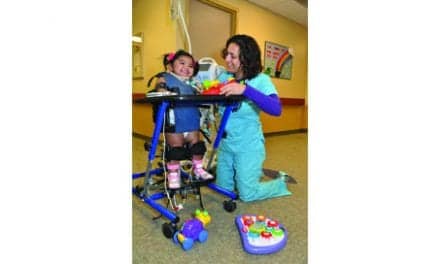Comparative research appearing in the current issue of Technology and Innovation-Proceedings of the National Academy of Inventors investigates the effectiveness of advanced prosthetic and orthotics technologies and their impact on active users’ lifestyles.
An editorial from M. Jason Highsmith, PT, DPT, CP, FAAOP, assistant professor, University of South Florida’s School of Physical Therapy and Rehabilitation Sciences, appears in the special issue discussing advancements in evaluating the benefits of prosthetics and orthotics using comparative effectiveness research appears in this special edition along with 12 studies. Highsmith explains that evidence-based analysis incorporates patient input, clinical expertise, and best evidence. These analytical elements, according to a news release from University of South Florida, are present in the issue, particularly among studies reporting extreme recreational pursuits evaluated in terms of both human functional performance and innovative technology prosthetic concepts for managing rigorous environments, climates, and terrain.
One of the studies centers on the design of adjustable ankle units on prosthetic devices engineered to allow the user to adjust the flexion of a prosthetic foot in sub-freezing temperatures quickly, as it tolerates “significant abuse, ice, and water,” to allow for variable terrain and swifter clothing changes.
The release reports that another study appearing in the special issue addresses the determinations of energy expenditure measurements during adventurous activities for individuals with lower-extremity amputations. Its data encompasses energy expenditure through the use of a multifunction prosthesis during a snowshoeing trek and vertical ice climbing in an arctic survival course.
An examination of fitness training for prostheses users is also included, revealing the design and performance of a device created by an amputee participant. The device was built to allow above-the-elbow amputees to do push-ups during a workout, comparing the results to the pushup performance of a non-amputee.
Additionally, many studies reportedly featured analyses and evaluation of the technical aspects of new prosthetic and orthotic devices for use in performing daily activities, with one study assessing the integration of functional electric stimulation into ankle foot orthoses prescribed for children with cerebral palsy (CP) to improve walking quality and ambulation function.
In the release, Highsmith notes that the papers ultimately expand beyond, “technological prosthetic concepts that are still being refined in the laboratory…they also pull together literature in an understudied sub-population of persons with lower-limb amputation and those with bilateral transfemoral amputation.”
The includes studies that investigate the functional aspects of stair climbing, short- and mid-distance walking speed, and a comparison between the Genium microprocessor knee to the C-Leg knee prosthesis.
Highsmith emphasizes his hope in his own editorial that rehabilitation practitioners will be able to use the studies appearing in the special edition to inform their practices and research in pursuit of improving quality of life.
[Source(s): Science Codex, University of South Florida (USF Innovation)]





